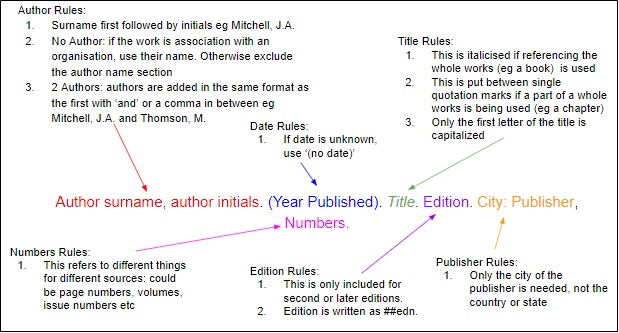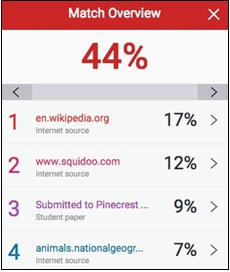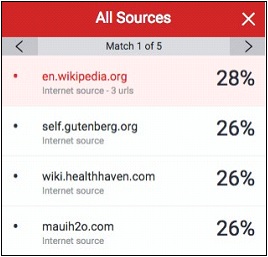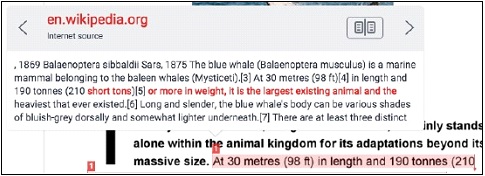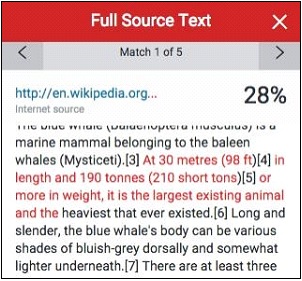- Case StudyHelp.com
- Sample Questions
Step-by-Step Guide – Writing Your Postgraduate Assignments
Words: 5000+
How to Write a Postgraduate Assignment Writing Paper? According to Our Case Study Help Experts, Top 5 Basic Steps Followed In Postgraduate assignment writing (INTRODUCTION, UNDERSTANDING THE KEYWORDS, REFERENCING STYLE, TURNITIN AND PLAGIARISM and REFERENCES). Hire the best assignment experts from Casestudyhelp to get quality assignment writing service.
1 INTRODUCTION
Welcome to the “Writing Your Postgraduate Assignments” guide!
This document is intended as a self-help guide for students to enable them to write their postgraduate assignments as per the expectations. The document will give an understanding about the nuances of postgraduate level writing and enable students to plan, draft and revise their assignments. Different tips are provided in the document that will advise students on how they can improve their writing from a descriptive level to a critical level, as expected in postgraduate assignments.
In addition to this Introduction section, the document contains three other major sections:
Section 2, What is Critical Writing?, describes the process of understanding the key words associated with postgraduate assignments and how one can use the model of critical thinking to write assignments that match the expectations of postgraduate writing.
Section 3, Harvard Referencing Style, describes the nuances of this style of citation that is followed throughout our programs. Also, the section lists some referencing tools that are widely used in academia, which students can use to manage their references. Using one of these tools, students can use to make sure their references are organized and precise as per the Harvard referencing style.
Section 4, Turnitin, describes the functionalities of Turnitin, the originality checking software. The section explains how one can interpret the Turnitin report and make sure that their work is not plagiarized in any way.
Without any further ado, let’s begin!
2 WHAT IS CRITICAL WRITING?
Understanding the Keywords
Before you begin writing your assignments, it is important to identify and understand the ‘key words’ in each of the questions. The ‘key word’ enables you to understand what exactly needs to be done while answering the question. Below are some of the common ‘key words’ used when framing assignments, and what is expected of the students corresponding to the keyword.
| KEY WORD | What is expected in the answer |
| Analyse | Identify the important features and key points, and examine critically in detail. |
| Compare | Show likenesses or similarity between two or more aspects and mention how relevant, significant these similarities are and what is the conclusion that you can draw from the same. |
| Contrast | Show how two or more aspects are different from each other and mention how relevant or significant these differences are, and what is the conclusion that you can draw from the same. Also, you can justify why one aspect is more appropriate or convincing than the other. |
| Criticise | Using examples, evidence and reasoning, make a judgement regarding the merit or importance of two or more correlated concepts such as models, examples, theories, etc. |
| Critically Evaluate | Weigh arguments in favour of or against some aspect, indicating the strength of both the pros and cons, and assess which is more compelling using evidence. Make sure you mention what criteria you have used to make your judgements regarding which side is more convincing or superior. |
| Describe | Mention or list the key aspects, characteristics or features of something and give a detailed description of the same. |
| Discuss | Considering the implications, give and elucidate the arguments in favour of or against an issue. Also, give evidence to support your arguments. |
| Distinguish | List and describe the differences between two or more aspects |
| Evaluate | Assess the value, significance, criticality, and how effective something is using evidence. You can also argue both in favour of and against the aspect under study. |
| Explain | Mention the reasons why something occurs or happens and why does it happen in a particular way and not the other. |
| Justify | Support an idea, concept, argument or point of view using strong evidence. Also, demonstrate why the decision was made or a conclusion drawn considering different aspects such as resistance or objection to that aspect. |
How can you improve your critical writing?
When planning to write your assignment, you need to think of a few questions that will enable you to move your writing from a mere descriptive style to a critical style. Figure 1 below shows the questions that you need to ask related to the topic under study, which will then enable you to plan writing your assignment in an appropriate writing style.
Also Read: Assignment Writing Guide for College and University Students
Furthermore, the following questions can be used under each criteria that will enable you to critically think about the topic under study and improve your writing from one level to another. For example, you get a feedback that your writing is mainly descriptive but not evaluative as asked in the question. So maybe you could consider answering some further questions such as: why is this significant or important? And what does this mean?
| WHAT? | What is this about? |
What is the context/ situation?
What is the central issue/ problem/ topic to be explored? DESCRIPTIVE WRITING
– Introductory and background information to contextualize problem/ topicWHEN?When does it happen?
WHO?Who is this by? Who is involved?
Who is impacted or affected?
Who might be interested?WHERE?Where does it take place?
WHY?Why did this happen?
Why was that done?
Why this argument/ theory/ suggestion/ solution? Why was not something else done? ANALYTICAL WRITING
– Exploration of relationships of part to whole
– Possible situations and alternative
response
HOW?How did this happen?
How does it work in theory or in actual practice/ context? How does one aspect affect another?
How do the parts fit into the whole? What if this were incorrect? What are the alternate options? What if it was problematic?
What if another factor was added, deleted or changed?WHAT
IF? SO WHAT?What does this signify? Why is this noteworthy?
If this convincing, why or why not?
What are the consequences or implications? Is it successful?
How does it meet the benchmark or criteria? What did I infer or deduce?
What did I notice or realize?EVALUATIVE/ CRITICAL WRITING
– Implications
– Solutions
– Conclusions
– Recommendations Is it transferable?
How and where else can it be used or applied? What can be learnt from it?
What needs to be done next?
What can be done differently or same the next time?WHAT NEXT?
3 HARVARD STYLE REFERENCING
Mendeley is a free reference manager and academic social network that can help you organize your research, collaborate with others online, as well as organize and store all your references in one place. Below are the Harvard Style referencing guide adopted from Mendeley. You can find a more detailed description of this referencing style on the Mendeley website. The link is mentioned in the References section.
Reference List
A reference list is a complete list of all the sources used when writing your assignment. Mendeley mentions the following characteristics of a Harvard reference list:
- Be on a separate sheet at the end of the document
- Be organised alphabetically by author, unless there is no author then it is ordered by the source title, excluding articles such as a, an or the
- If there are multiple works by the same author these are ordered by date, if the works are in the same year they are ordered alphabetically by the title and are allocated a letter (a,b,c ) after the date
- Be double spaced: there should be a full, blank line of space between each line of text
- Contain full references for all in-text references used
Core Components of any Harvard Reference
Any Harvard Style Reference follows the format mentioned in the below figure. Components can be changed, added or removed to adapt this structure to fit different sources.
In-Text Citations
In-text references are given at the end of a quote or paraphrase taken from another piece of work. Johnson (2017, p. 189) states.. Or (Johnson, 2017, p. 189)
(Note: p. refers to a single page, pp. refers to a range of pages)
- Two or Three Authors
Johnson, Johnson and Thomson (2017, p. 189) states… Or (Johnson, Coyne and Thomson, 2017, p. 189)
- Four or More Authors
The first author’s surname should be stated followed by ‘et al.’ Please note that the ‘.’ dot if after al and not et
Johnson et al. (2017, p. 189) states… Or (Johnson et al., 2017, p, 189)
- Multiple Works from the Same Author in the Same Year
If referencing multiple works from one author published in the same year, the works are allocated a letter (a, b, c and so on) after the year.
(Johnson, 2017a, p. 189) or Johnson (2017b, p. 189)
- Citing Multiple Works in One Parentheses
List the in-text citations in an alphabetical way but with semicolons between different references: (Andrews, 1989, pp. 165-176; Johnson, 2000, p. 189; Johnson, 2017)
How to Cite Different Source Types
- Journal Article
The basic format to cite a journal article is:
Journal Article Example
Johnson, J.A. ‘How citation changed the research world’, The Mendeley, 62(9), p70-81.
Journal Article Online Example
Johnson, J.A. ‘How citation changed the research world’, The Mendeley, 62(9) [online]. Available at: https://www.mendeley.com/reference-management/reference-manager (Accessed: 15 November 2016)
Book
Book referencing is the simplest format in Harvard referencing style. The basic format is as follows:
Book Referencing Example:
Source: Mendeley, Harvard Citation Guide
Johnson, J.A. and Thomson, M. (2017) A guide to citation.3rd edn. London: London Publishings.
Edited Book
Edited books are collations of chapters written by different authors. Their reference format is very similar to the book reference except instead of the author name, the editor name is used followed by (eds.) to distinguish them as an editor. The basic format is:
Editor surname(s), initial(s). (eds.) (Year Published). Title. Edition. Place of publication: publishers
Edited Book Example:
William, S.T. (eds.) (2015) Referencing: a guide to citation rules. New York: My Publisher
Chapter in an Edited Book
For citing chapters, you need to add the chapter author and chapter title to the reference. The basic format is as follows:
Chapter in an Edited Book Example:
Troy B.N. (2015) ‘Harvard citation rules’ in Williams, S.T. (ed.) A guide to citation rules. New York: NY Publishers, pp. 34-89.
In-Text Citations: Chapter in an Edited Book. Use the chapter author surname, not the editor.
E-Book
To reference an e-book, information about its collection, location online and the date it was accessed are needed as well as author name, title and year of publishing:
E-Book Example:
Johnson, J.A., Thomson, M. and Coyne, R.P. (2017) A guide to citation. E-book library [online]. Available at: https://www.mendeley.com/reference-management/reference-manager (Accessed: 10 September 2016)
Newspaper Article
Citing a newspaper article is similar to citing a journal article except, instead of the volume and issue number, the edition and date of publication are needed:
Author surname(s), initial(s). (Year) ‘Article Title’, Newspaper Title (edition), day month, page number(s).
Note: edition is used only where applicable.
Newspaper Article Example:
Johnson, J.A. (2017) ‘Changes to citation formats shake the research world’, The Mendeley Telegraph (Weekend edition), 6 July, pp.9-12.
Website
The basic format to cite a website is:
Author surname(s), initial(s). (Year of publishing) Title of page/site [Online[. Available at: URL (Accessed: day month year)
Website Example:
Johnson, J.A. (2017) How and when to reference [Online]. Available at: https://www.howandwhentoreference.com/ (Accessed: 27 May 2017)
Referencing made Easy
There are different ways in which you can reference precisely and make sure you referencing style matches exactly with the requirements of your academic institutions. Below are some of the different softwares you can used to make referencing easy and precise.
Mendeley
A free referencing manager and social network software that helps you organize research, collaborate online and discover new research. You can sign up for a Mendeley account online and install the Mendeley Desktop Tool in your system.
Endnote
Another reference management tool that allows you to import references directly from online databases such as Web of Science, Elsevier, etc. References can also be imported by uploading a list of references in Citation Manager format.
Zotero
A free referencing tool that allows you to collect, organize, collate, cite and share research sources. Zotero comes with a browser extension that detects the content you are accessing and allows it to be added to your personal library.
RefWorks
Web-based reference management software which stores the reference database online. The references can be accessed and updated from any system with an internet connection.
Paperpile
A GoogleDocs Addon for managing your references and bibliography. This tool can be used if you are using GoogleDocs for writing papers instead of MS Word.
Papers
A citation manager and referencing tool that allows users to discover, consolidate, read and annotate their research. Papers is available for both Windows and Mac.
Built-in Microsoft Word Plug-in
Microsoft Word has a simple built-in reference function at the References tab.
Here you can manually enter references and refer to them in the text and create a bibliography in the most common styles (APA, Harvard, MLA, etc.).
4 TURNITIN AND PLAGIARISM
Turnitin is an originality checking software that enables plagiarism prevention by checking your writing for citation mistakes or inappropriate copying. Below are some pointers adopted from Turnitin that help you understood what plagiarism is and how to read Turnitin reports. You can find a more detailed description of the Turnitin Feedback Studio on the Turnitin website. The link is mentioned in the References section.
What is Plagiarism?
The Merriam-Webster dictionary defines the idea of plagiarism by mentioning that to “plagiarize” means:
- to steal and pass off (the ideas or words of another) as one’s own
- to use (another’s production) without crediting the source
- to commit literary theft
- to present as new and original an idea or product derived from an existing source Turnitin mentions that all of the following are also considered plagiarism:
- presenting someone else’s work as your own
- using words or ideas from someone else without giving citation
- failing to put quotation marks when a quotation from another source has been used
- providing wrong information about the source of a quotation
- altering words but maintaining the same sentence structure without citing
- copying majority of your work from another source, whether you give credit or not
Most cases of plagiarism can be avoided by citing sources. What is important is to acknowledge that you have borrowed certain information from different sources, and then provide the audience with the information necessary to find those sources. Following appropriate practices in paraphrasing and referencing are usually enough to prevent plagiarism.
NOTE: Turnitin is used as an investigative tool by academic institutions to determine any problem areas in a student’s paper. The similarity score simply highlights the match found and cannot be quantified objectively as acceptable or unacceptable. The discretion for determining what is acceptable remains with the academic team of the institution.
How to Paraphrase?
A paraphrase is a restatement of someone else’s ideas in your own words. In order to write a legitimate paraphrase, you have to not only changed the words in the sentence, but also the structure of the sentence needs to be modified. And most importantly, even though the sentence or idea is paraphrased and presented, it needs to be cited. You need to mention the original source which discussed the idea in the first place, even though you are writing it in your own words.
Also Read: What are the Academic Assignment Writing Guidelines?
Interpreting the Similarity Report
The similarity score simply highlights any matching areas in your paper so that it can be used as an investigative tool to determine if the match is or is not acceptable.
Viewing a breakdown of your matches
To view the Match Overview, click on the red, numerical similarity score from the product toolbar. ![]()
The Match Overview will be displayed within the Match Overview side panel.
Having clicked the Match Overview icon, this will also highlight any matches within the paper itself. Each match can be color coded to help you identify them easily.
By clicking on one of the sources from the Match Overview side panel, you can discover how many matches have been found for each source. Click the navigation arrows to jump from one match to the next; this will move you through the paper itself.
Should you wish to see a match breakdown for each source, click the arrow to the right of the source?
You can now see a large list of all the sources concerning this particular match. Click any of these matches to be directed to it on your paper.
The Match Overview gives you a breakdown of all the matches that have been found in the paper and allows you to clearly view the similarity score. Matches are ordered by highest instance of similarity down to the lowest. Each match has a color and a number attached to it. These color tags will help you to find the match on the paper itself.
Viewing all sources associated with a paper
In the All Sources side panel, all of the sources that have been found are displayed and sorted by highest percentage to lowest percentage match. Clicking on any source will change the navigation bar at the top of the page, displaying how many times that this source has matched in the paper. Clicking the arrows will allow you to see where these have matched on the page. You can further refine this navigation by clicking on an individual page within a source; this will simply show you matches from that specific sub-source. To view All Sources, select the red graph icon from the similarity toolbar.
You can now see a large list of all the sources for this paper. Select any of these matches to be directed to it on your paper.
Viewing source details
If you would like to see more information regarding the text that has matched to a source, click on the source number from within the paper.
A pop-up box will appear; this will show you further details relating to the source that your writing has been matched with.
Should you wish to view the source in more depth, click on the Full Source View icon in the top right-hand corner of the pop-up?
The right-hand side panel will change to Full Source Text, which you can scroll through to read in detail.
5 REFERENCES
Reference Material adapted from the following sources:
Critical thinking. (2010). Retrieved from http://www.learningdevelopment.plymouth.ac.uk/
LDstudyguides/pdf/8Criticalthinking.pdf
Hilsdon, J. (2010). Model for generating critical thinking.
Retrieved from http://www.learningdevelopment.plymouth.ac.uk/
LDstudyguides/
Mendeley (2020) Harvard Citation Guide. Available at:
https://www.mendeley.com/guides/harvard- citation-guide
Turnitin (2020) Feedback Studio. Available at:
https://help.turnitin.com/feedback-studio/turnitin- website/turnitin-home.htm
You May Also Read:
- CIQGM704 International Marketing Management Case Study Assignment Answers
- FIAT International Marketing Management Assignment Sample
FOR REF… Use: #getanswers2001480 – C




